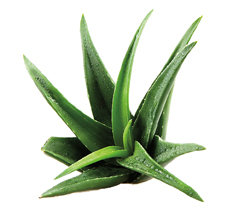Succulents for your Garden
Posted on September 2, 2013 by bob in Yard 'N Garden
 My childhood summers were spent on Cape Ann in Massachusetts where the weather is influenced by the closeness of the Atlantic Ocean. There was not much rain, but it was frequently damp, the soil was rocky, and the sun could be intense. One of the plants that thrived in this environment was the succulent called “hens and chickens”, a small rosette shaped plant with a central “hen” surrounded by off-shoots of little “chicks”. I loved the growth habit and their seeming ability to grow almost anywhere, including cracks and crevices with only tiny amounts of soil.
My childhood summers were spent on Cape Ann in Massachusetts where the weather is influenced by the closeness of the Atlantic Ocean. There was not much rain, but it was frequently damp, the soil was rocky, and the sun could be intense. One of the plants that thrived in this environment was the succulent called “hens and chickens”, a small rosette shaped plant with a central “hen” surrounded by off-shoots of little “chicks”. I loved the growth habit and their seeming ability to grow almost anywhere, including cracks and crevices with only tiny amounts of soil.
When I started gardening as an adult, this plant – properly called Sempervivum, meaning always alive – was one of the first to go into my garden.
Sixty years later I still have some of the Sempervivum from Cape Ann growing in my garden. The architectural shapes, the colors, and their hardiness continue to fascinate me. What are the characteristics that make a plant a member of the succulent family? All succulents are able to store water in their tissues using their specialized structures, and to live in hostile environments.
The tall columnar cactus is a succulent most people recognize; it stores water internally, expanding or contracting its shape according to conditions. The spines of the cactus are part of its strategy for collecting moisture for future use, as the spines expand the surface area of the plant and allow it to collect moisture from the air. All cacti are succulents, but not all succulents are cacti. This article will focus on leaf succulents such as the Sempervivum mentioned above.
There are many families in the leaf succulent category, including the jade plant, kalanchoe, aloe and agave. One frequently grown in our gardens is the sedum, Autumn Joy.
People frequently make the error of treating these plants like most other plants and water and fertilize them too generously, resulting in rotted plants or spindly floppy plants.
Remember, these succulents evolved to survive in hostile environments. To enjoy them and keep them shapely, treat them with tough love. Water infrequently, not more often than every two weeks; less frequently for larger plants. In the winter they’re dormant so water even less. If the leaves, where they store water, start to wither, you know they’re thirsty. Pot them in a soil that drains rapidly, place them in a bright window in the winter, outside in the summer, and fertilize lightly in the spring.
Growing succulents in Alabama is a bit of a challenge as the humidity is too much for most of them. The leaf succulents mentioned here do very well as house plants, and there are many creative ways of using containers to grow the hens and chicks and other small succulents that don’t do well in the garden.
For example, any discarded watering can, wheel barrow or birdbath is lovely filled with succulents.
Just be sure to provide excellent drainage and move it into the garage on cold winter days. Most are hardy to 40 degrees or a bit lower. The way I currently enjoy my succulents is in dish gardens or growing in a living wreath where the various textures and colors complement each other.
Try growing succulents in your house or garden, but remember to treat them rough.
Barbara Witt, a member of the Capital City Master Gardener Association, specializes in succulent plants. For more information about the association, visit their website, www.capcitymga.org/, or e-mail capcitymga@gmail.com.









